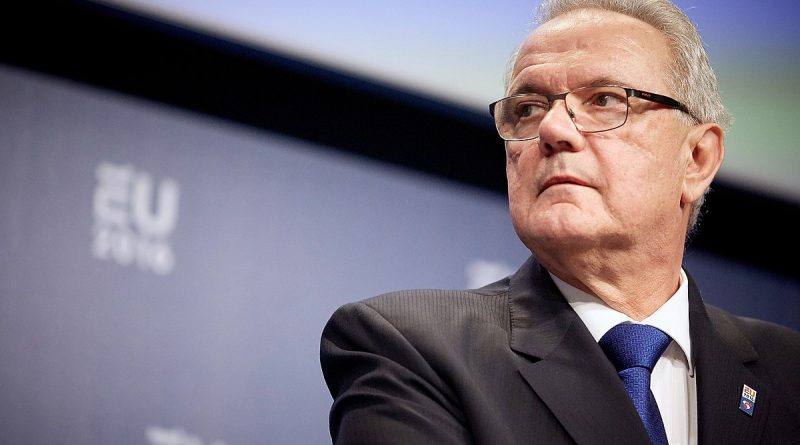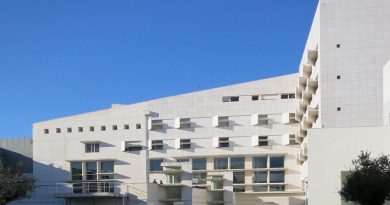10 Things to Read About EU Development Aid Policy
Today, development is one of the EU’s crucial work areas, as it is considered the largest collective donor worldwide by accounting for over half of total ODA (Official Development Assistance) provided by the member states of the Development Assistance Committee (DAC). As a large actor in DAC, the EU also has a complex policymaking system where many actors and factors can influence development policy on specific issues.
Starting with a review of the EU’s aid architecture, these 10 articles aim to examine some of the many challenges that the development aid system in the EU currently faces. These challenges raise important questions for the EU concerning the future rationale and organization of development assistance. For a general overview, the Financial Perspective Plan (2014-2020) and the EU’s tool to explore how and where the donor funds are spent are also available.
1 – Delivering the EU’s Development Policy: Policy Evolution and Administrative Reform
First of all, to understand the significance and the expression of the EU’s collective interests on the world stage it may be helpful to know how EU development policy has evolved in response to the changing international political environment. This paper shows the reality of the complexities of EU development policy through its evolution since the mid-1990s and reviews the administrative reforms which have accompanied the EU’s development programme. Finally, the paper considers the remaining policy, organizational, and administrative issues that should be addressed in order to realize the potential for efficient aid delivery with a ‘policy coherence for development’.
2 – Mission Impossible: the European Union and Policy Coherence for Development
Speaking of ‘policy coherence for development’ (PCD) – which according to a widely accepted definition means “taking account of the needs and interests of developing countries in the evolution of the global economy” – this article analyses its evolution from the EU’s perspective and traces the debate since its institutionalization in the early 1990s, by the Treaty of Maastricht. For various reasons, limited progress and the incoherence of the EU in its approach to international development was questioned by the NGO community and a number of member states, such as Denmark, the Netherlands, Sweden and the UK. A change in direction occurred in the early 2000s when the European Commission showed that the PCD would not be achieved if the member states of EU did not take concrete initiatives by acting as a unitary actor and the call for better policy coherence for development will be not a ‘mission impossible’ if the member states will be more committed to improving the effectiveness of EU aid and the visibility of the EU in international development.
As explained before, global development challenges require collective action if they are to be resolved. With this purpose, in 2005, European Consensus on Development set out a common vision for development to guide member states’ bilateral policies at EU-level aid. Also the Lisbon Treaty, in 2009, reaffirmed the need for EU-level and member state actors to work together. Finally, the EU’s position on the post-2015 global development agenda expressed the EU’s commitment to translate this vision into collective action. This paper shows, in terms of development cooperation, the various challenges (as economic crisis, debt crisis, Brexit, migration etc.) that EU have to face and it try to explore strategies for overcoming collective action problems.
4 – Costs, Benefits and the Political Economy of Aid Coordination: The Case of the European Union
Within the EU’s development policy, a crucial collective action problem is the lack of coordination as this issue has gained new impetus over the years. This article contributes to conceptualizing ‘aid coordination’ as a potential to increase the impact of development aid. Here it is assumed that although all development cooperation actors have committed to increasing their coordination efforts in the context of the ‘aid effectiveness agenda’, the EU is far from being a single actor. The increasing number of aid providers and aid activities has resulted in ‘fragmentation of aid’ which has several consequences, especially for aid recipients, as the transaction costs. Better coordination is considered crucial for overcoming negative consequences of aid fragmentation and encourage developing countries to increase coordination efforts will be manage even better this diversity of donors, instruments, programmes and projects.
5 – Donors’ Preferences and Agent Choice: Delegation of European Development Aid
This article examines the donor countries’ decision to distribute aid bilaterally or turn to a multilateral organization. In fact, each donor can select an agent from a range of international organizations and determine the level of delegation. According to this article, in their delegation decisions, donors are guided not only by standard calculations of delegation costs and benefits, but also by policies that international development agencies adopt and implement. Through an empirical analysis, the study evidences that donor governments’ increasing contributions to international organizations when the members’ preferences converge. On the other said, as member preferences become more heterogeneous, collective decision making is less likely to produce a policy that would be acceptable to member countries. Consequently, donor governments could reduce their use of multilateral channels for aid distribution.
6 – Between EU Actorness and Aid Effectiveness: The Logics of EU Aid to Sub-Saharan Africa
This article argues that, by acting cohesively, the European Union was able to increase its coordination efforts in the context of the ‘aid effectiveness agenda’ throughout the 2000s, particularly on the issue of donor complementarity. Despite this, its ability to promote aid effectiveness can be constrained by national aid bureaucracies and by the complex aid architecture. It is the case of sub-Saharan Africa studied here. Even if at the headquarter level, the European Commission sought to enhance EU actorness as key to aid effectiveness, while on the ground national aid bureaucracies in sub-Saharan Africa have been more reticent. Against this background, this paper investigates the link between EU actorness and aid effectiveness. By explaining how the EU behaves in international development, the article intends to promote a better understanding of the concept of EU actorness and it sheds new light on the issue of aid effectiveness.
The recent changes in global economic flows, geopolitical realities and poverty patterns, have influenced the aid allocation within the new European Commission (EC) policy. This paper explains the EC’s new policy, which aim is to recalibrate its development cooperation with middle-income countries (MICs) and shows how it impacts. The EC’s new ‘differentiated development partnerships’ could indeed provide innovative ways to tackle some of the challenges facing MICs; however, the current allocation of financial resources to new-style partnerships is limited. The paper concludes that a stronger evidence base is necessary in designing the policy, including specific country impact assessments and a detailed explanation of the new aid allocation criteria.
This paper addresses how EU policies and aid practices at the interface of security and development have evolved since the turn of the 21st century. The objective is to determine whether security concerns have had a growing influence over EU development policy and aid allocation. Since the evolution of the EU itself as an international actor, security and development have become more closely interrelated. But there are certainly cases where EU security interests come first, with potentially negative consequences for development objectives (i.e. as a limit for ‘policy coherence’). However, it is difficult to argue with any certainty that securitization has modified the distribution of aid, in fact although there are parallels between EU aid allocations and countries that are important for security reasons, there are many others causal factors.
9 – Financing European development cooperation: The Financial Perspectives 2014-2020
The Financial Perspectives (2014-2020) form part of the EU’s multi-annual financial framework review, which shape the future of EU development assistance and the credibility of the EU as a player in international development. EU development aid and other policy expenditures are determined every seven years in framework budget reviews through debates and negotiations on the future priorities, financial allocation, instruments and structure that EU development cooperation must consider to better manage its external policies. Here are listed the weaknesses of the EU budget, the policies put forward, and a series of questions about the future of aid in EU development policy, including as its added value, how narrow or wide its definition, its geographical focus, and the extent to which it is prioritized amongst other external policies.
10 – EU Aid Explorer
Finally, to anyone who wants to examine the use of donor funds it may be helpful have a look at the “EU Aid Explorer”, a web tool where countries, beneficiaries, EU citizens, and implementing partners can have access to data on development and humanitarian aid around the world. Maps and graphs are used to visualize which donor is active where, which sectors and countries receive how much assistance, and how funding changes over time. The data used in this new tool is taken from a range of sources such as the OECD, UN OCHA, EDRIS and the IATI registry. But all donors who report their aid data to international standards are covered by the site, so only how and where the donor funds are spent can be visualized.
Neven Mimica, European Commissioner for International cooperation and Development / photo by Netherlands EU presidency EU2016NL / CC BY 2.0
![]() This work is licensed under a Creative Commons Attribution-NonCommercial-ShareAlike 4.0 International License.
This work is licensed under a Creative Commons Attribution-NonCommercial-ShareAlike 4.0 International License.




